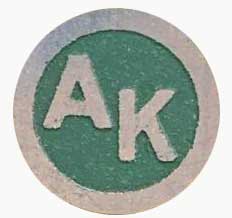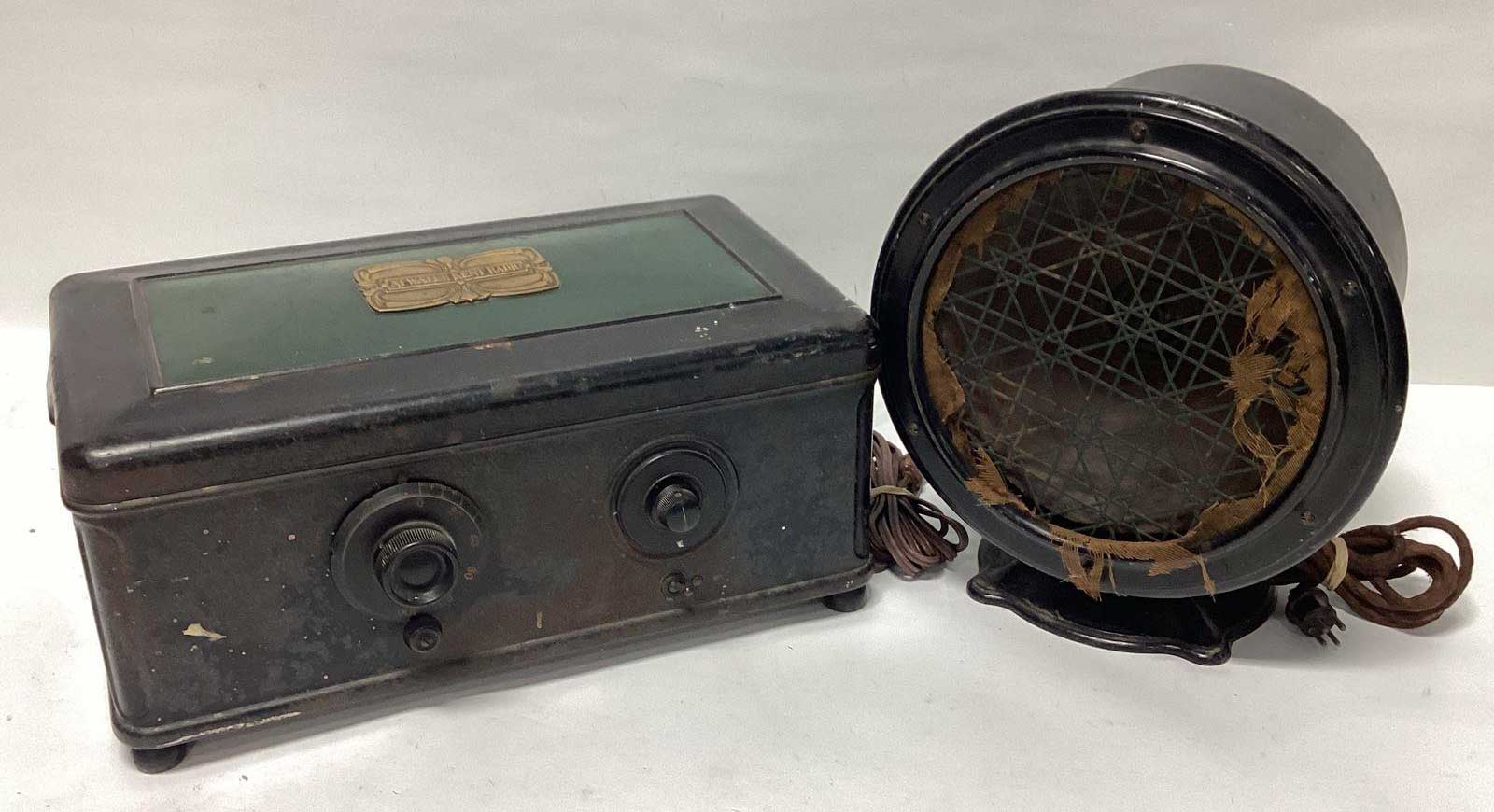 There were a lot of radio manufacturers with hyphenated names
(e.g.Grigsby-Grunow, Sparks-Withington, Stromberg-Carlson, Wilcox-Gay) but this was named for one man, Arthur Atwater Kent.
There were a lot of radio manufacturers with hyphenated names
(e.g.Grigsby-Grunow, Sparks-Withington, Stromberg-Carlson, Wilcox-Gay) but this was named for one man, Arthur Atwater Kent.
Atwater Kent made a number of radios using the same basic cabinet design. The metal can was supposedly cheaper to make than the wooden boxes that were the norm well into the 1940s, yet the only other company I aware that a similar cabinet was Crosley with their Bandbox. As they ended up going back to wooden cabinets in the 1930s, I assume the metal cabinet experiment was ultimately a failure.
 I had thought this was a Model 42 radio made in 1928. It was priced at $86 without tubes. I bought this from an online auction and haven't physically seen it yet; and the photographs
were acceptable but not great. The speaker is a Model F2 from 1929 and would have cost around $20. I paid $10 for both. Also without the tubes. After I picked it up and opened the cabinet, I found that AK was kind enough to put in a big MODEL 46 badge on the power supply. Mystery solved.
I had thought this was a Model 42 radio made in 1928. It was priced at $86 without tubes. I bought this from an online auction and haven't physically seen it yet; and the photographs
were acceptable but not great. The speaker is a Model F2 from 1929 and would have cost around $20. I paid $10 for both. Also without the tubes. After I picked it up and opened the cabinet, I found that AK was kind enough to put in a big MODEL 46 badge on the power supply. Mystery solved.
Or is it? Ryder's Pepetual Troubleshooter Manual (2-2) says this:
Model 46 is simiar to Model 43, except that the power unit is enlarged to provide adequate plate supply for the 171A-type tubes used in the 2nd AF stage. Also the voltage regulator is not used, and the condensers in the power unit are contained in a separate replaceable section. Model 53 is a Model 46 with a type F-2C electro-dynamic speaker mounted in a 26-inch high metal cabinet.
Model 47 is similar to Model 46, but has four stages of RF amplification, with double RF transformers, thus providing greater sensitivity and selectivity.
Model 47 is similar but has one addtional stage of RF amplification and a local-distance switch like that on the Model 44.
From what I've been able to gather, the design started as the Model 33/36/49, which used DC power on the board and needed a "power pak" power supply to use household AC. The next generation was the 40, 42, 52, 56 and 57, which had the power supply on-board and used an 80 tube as the rectifier. According to advertisements, the 42 was a 40 with a voltage control on the line. A Model 44 was basically the same but had a 4th RF amp.
I haven't figured out how the 43/46 differ enough to rate its own schematic because it's still in the same family. It does have a pair of 71As for AF output. The 46 shares the same deluxe metal cabinet as the 42.
Right before the big stock market crash, there was a good business going on by 3rd parties taking tabletop radios and fitting them into big wooden consoles (I used to have one for a Crosley Bandbox). It appears that this and similar AKs were prime fodder for deluxe cabinets. I wonder how many have survived.
Tube compliment: three 26s as RF amplifiers and another as the first AF amplifier, one 27 as the detector, two 71As as a 2nd AF amp, and our old friend the 80 rectifier.
My Model 46
I just barely got it so I'm still looking into it. All the tubes are gone so I'll have to see what I've got. The chassis looks to be in good shape; the cabinet is scratched a lot but no major damage.
My Speaker
My radio came with the appropriate Model F-2C speaker.
Reference
Service docs are in Rider's Perpetual Troubleshooter's Manual Vol 2 and 3, and Beitman's Most Often Needed, Vol 1. The Beitman's seems to be a little cleaner and easier to read.
Current status: evaluating it; needs toobs.
.jpg)

.jpg)